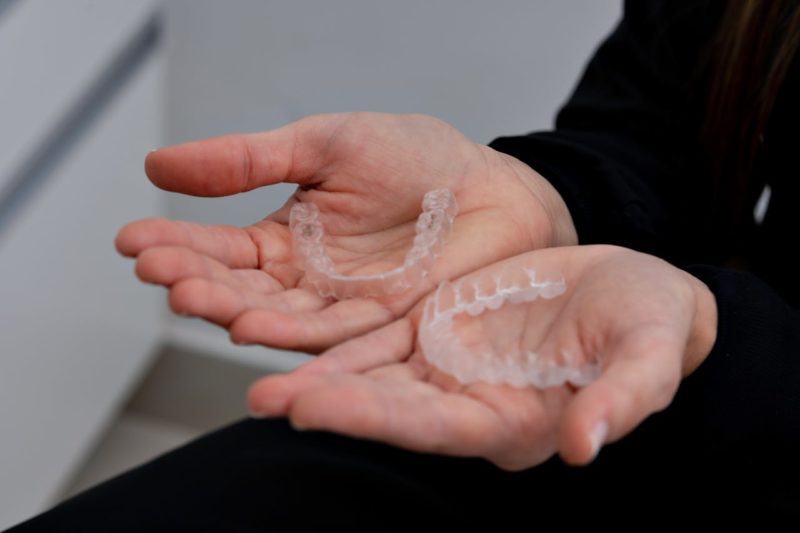How Intraoral Scanners Accelerate Clear Aligner Treatment

Digital dentistry is quietly transforming how orthodontic care begins—and it often starts with a scan. Gone are the days of sticky, uncomfortable impressions that trigger your gag reflex. Instead, intraoral scanners are reshaping how dentists capture your bite and plan your treatment, especially when using clear aligners.
This article covers:
- How scans compare to traditional impressions in comfort and efficiency
- The scan-to-aligners workflow explained step by step
- What the research says about scanner accuracy—and what they don’t replace
Digital scanning replaces putty for most aligner starts
Intraoral scanning replaces the old-school method of biting into goopy trays. A small wand captures digital impressions in seconds, without the discomfort and mess. You’re spared the unpleasant taste and long wait for molds to set.
These scans are increasingly becoming the first step in clear aligner therapy. Instead of manually sending a tray to a lab, clinics can immediately start designing a treatment plan based on the 3D model.
You’ll usually sit back while a dental professional moves the scanner over your teeth. It captures thousands of images to stitch together a high-resolution 3D map of your mouth. Most patients report little to no discomfort—and fewer re-takes compared to physical impressions.
Clear aligner providers use these scans to build personalised treatment plans and simulate expected tooth movements. This approach also cuts down the risk of lost impressions and poor-quality fits.
This level of image quality is vital to getting it right the first time, and supports better clinical decisions from the start. For more on this, explore how clear imaging improves clinical decisions.
To understand where scanners fit into aligner care, it’s helpful to look at how the process actually unfolds.
Also see the AAO’s explanation of how clear aligners work to understand where scanning fits into this modern method.
A simple workflow: scan → plan → trays
Let’s break down the clear aligner workflow into three key steps:
- Capture – Your dentist or orthodontist uses an intraoral scanner to map your teeth in 3D.
- Plan – Software simulates tooth movement and designs a stage-by-stage aligner path.
- Manufacture – Trays are 3D printed and shipped for you to begin treatment.
The entire process is faster than traditional methods. A scanned model can be sent to the lab or in-house printer within minutes, not days. You can even preview your potential smile during the consult using simulation tools.
Many practices find this workflow allows for a better patient experience with less delay.
For a more in-depth view, Linea provides an excellent breakdown of how modern intraoral scanners support aligner therapy through better data collection and clinical alignment.
What the evidence says about accuracy and fit
Digital scanners offer precision and repeatability—but only when used correctly. Accuracy in this context refers to both trueness (how close the scan is to reality) and precision (consistency across multiple scans).
Research shows that scanner performance varies by device, scan strategy, and case complexity. In general, scans are highly reliable for single arches and routine aligner setups. Longer spans and more complex orthodontic cases may require more care.
A key benefit of digital scanning is that it reduces the number of re-takes. When a scan is done correctly, it can produce aligners that fit better from the start.
For deeper insight, the NIH’s review on intraoral scanner accuracy highlights the technical factors clinicians must manage to maintain quality.
Comfort, time, and hygiene benefits in the chair
Digital impressions are faster and less invasive. Patients often appreciate not having to sit through a five-minute impression with a full mouth tray.
The average scan takes only a few minutes, depending on complexity. There’s less anxiety, fewer re-dos, and quicker results.
Digital files can also be sent instantly to labs or stored securely—no need for physical shipping or risk of breakage. This leads to smoother handoffs and less material waste in the clinic.
A cleaner, faster process means practices can serve more patients, and you can get started with treatment sooner.
Limits and expectations: what scanners can’t solve
Scanners are a powerful tool—but they don’t replace orthodontic expertise. In complex cases, such as deep bites or rotations needing multiple auxiliaries, your orthodontist may still recommend braces or hybrid approaches.
And while aligners are carefully staged, refinements mid-treatment are common. Small adjustments and new scans may be needed as your teeth respond.
It’s also important to remember that accuracy relies on both the scanner and the operator. Training, technique, and quality checks all play a role.
Scanners are a starting point—not a guarantee.
Home care and check-ins between trays
Once your aligners arrive, much of the success depends on what happens at home. Daily wear for 20–22 hours, proper cleaning, and regular check-ins are all part of the journey.
Good hygiene matters too. Rinse your trays, brush your teeth before putting them in, and store them properly when eating.
Some patients use smart toothbrushes or apps to track habits. You can explore tools like those mentioned in CosmoBC’s piece on smart toothbrushes and everyday dental tech for helpful insights.
Equally important is not skipping your regular check-ups. Your dentist will check for fit, progress, and any necessary refinements. Find out why regular dental check-ups still matter even during clear aligner therapy.
In summary
Intraoral scanners are changing how clear aligners begin—making impressions cleaner, faster, and more accurate. But digital tools work best alongside professional oversight and good habits.
Before you begin:
- Understand the scan-plan-tray process
- Ask if your case is right for aligners
- Follow through with check-ins and wear-time
- Take care of your aligners with smart daily hygiene
Together, you and your provider can make digital dentistry work for your smile.
Would you like to receive similar articles by email?





